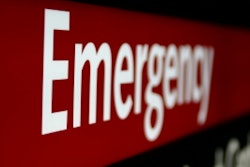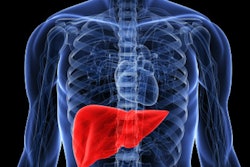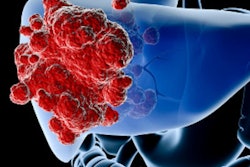
SAN DIEGO - CT has a key part to play in population health management efforts -- and radiologists can help, according to a presentation delivered September 15 at the International Society for Computed Tomography (ISCT) meeting.
Radiologists can help leverage not only CT's benefits but those of artificial intelligence (AI) as well, presenter Dr. Arun Krishnaraj of the University of Virginia in Charlottesville told session attendees.
"Ensuring high-value imaging is performed will ensure the future of our profession, and CT will be critical to that future," he said. "Emerging AI tools and techniques will further increase our standing as physicians who play an integral role in impacting population health."
Krishnaraj started his talk with a definition of population health management, citing a study he and colleagues conducted in 2021 that described it as "the holistic process of improving health outcomes of individuals through the support of appropriate financial and care models." Population health management intersects with a variety of healthcare spheres, he noted:
- Surveillance and prevention: mammography, low-dose chest CT for lung cancer screening, virtual colonoscopy, and abdominal aortic aneurysm screening
- Acute care: clinical decision support, inpatient care coordination, and managing the clinical pathway
- Chronic care: abdominal aortic aneurysm and lung nodule follow-up, oncology care, and tracking conditions such as fatty liver or metabolic syndrome
CT can play a critical role in keeping people healthy, Krishnaraj said. For example, an individual with elevated body mass index and high blood pressure undergoes a CT exam for kidney stones, but the radiologist identifies steatosis or high visceral fat volumes, suggesting that the person could be at risk of heart attack or stroke.
"Existing clinical prediction models during a routine physical would underestimate this risk," he said. "Opportunistic and elective [CT] imaging, if done within appropriate boundaries, is very effective at identifying presymptomatic disease."
In fact, there's potential to shift from opportunistic imaging via CT to "opportunity" imaging as part of the routine annual exams patients undergo. A good way to do this could be to add low-dose CT to the encounter -- which would put radiologists right in the middle of providing preventative patient care.
"The annual physical exam establishes a relationship between the patient and the physician, and serves as a checkpoint for patients to be aware of their health," he said. "[But] getting an ultralow-dose CT would allow for a discussion between the patient and the physician about CT findings coupled with information from existing clinical prediction models to better assess risk."
AI could support this transition from opportunistic to opportunity imaging, as it can support very low dose imaging and quickly quantify and refine data -- easing radiologist workflow.
"Data is the new oil," he said. "If it's not refined and purified, it's not of much value."
Radiologists must step into their place as key contributors to population health management, Krishnaraj urged.
"Through population health management, radiologists can be at the epicenter of healthcare," he said. "Our role is to curate [the data we gather and use it] to provide high quality care and identify disease before it presents."





















